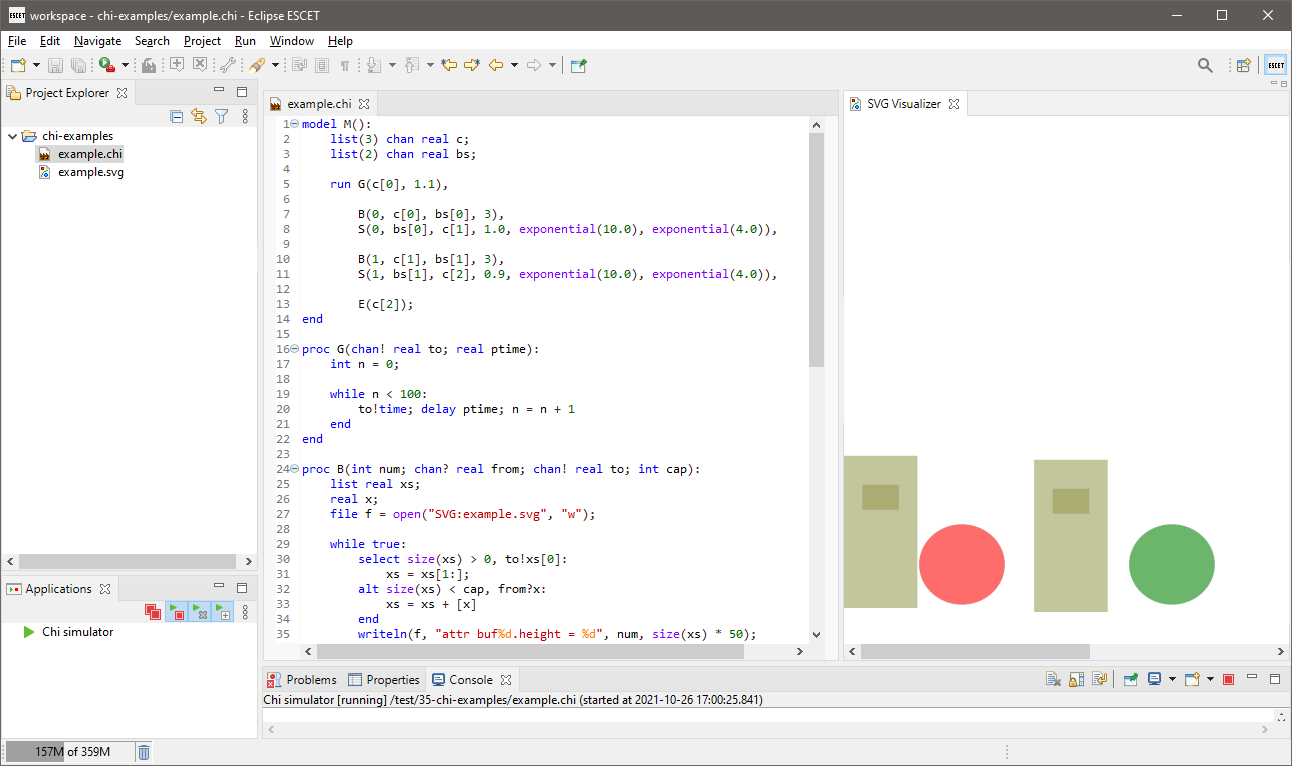Chi is a modeling language for describing and analyzing performance of discrete event systems by means of simulation. It uses a process-based view, and uses synchronous point-to-point communication between processes. A process is written as an imperative program, with a syntax much inspired by the well-known Python language.
Chi is one of the tools of the Eclipse ESCET™ project. Visit the project website for downloads, installation instructions, source code, general tool usage information, information on how to contribute, and more.
| You can download this manual as a PDF as well. Or use the single-page HTML version. |
- Tutorial
-
The Chi Tutorial teaches the Chi language, and its use in modeling and simulating systems to answer your performance questions.
Some interesting topics are:
-
Basics (Data types, Statements, Modeling stochastic behavior)
-
Modeling (Buffers, Servers with time, Conveyors)
-
- Reference manual
-
The Chi Reference Manual describes the Chi language in full detail, for example the top level language elements or all statements. It also contains a list with all standard library functions and a list with all distribution functions.
Some interesting topics are:
-
Global definitions (Top level language elements)
-
Standard library functions (Standard library functions)
-
Distributions (Available distributions)
-
- Tool manual
-
The Tool manual describes the Chi simulator software. Use of the software to create and simulate Chi programs is also explained.
- Release notes
-
The Release notes provides information on all Chi releases.
- Legal
-
See Legal for copyright and licensing information.
A screenshot showing a Chi model and simulation with visualization:
